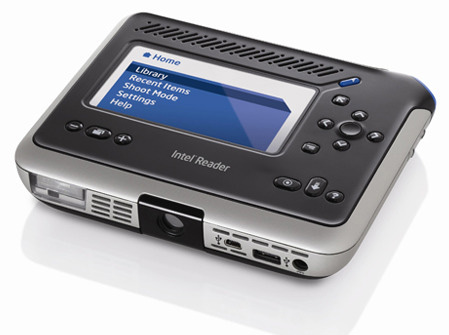 There are an estimated 55 million people in the United States who have specific learning disabilities such as dyslexia or vision problems that hinder their ability to read. While there are solutions that can help mitigate these problems, millions of people around the world still have problems reading. A computer with text-to-speech capabilities can help, but doesn’t help much with printed text in textbooks or newspapers.
There are an estimated 55 million people in the United States who have specific learning disabilities such as dyslexia or vision problems that hinder their ability to read. While there are solutions that can help mitigate these problems, millions of people around the world still have problems reading. A computer with text-to-speech capabilities can help, but doesn’t help much with printed text in textbooks or newspapers.
In order to address this problem, Intel is launching the Reader, a mobile device the size of a paperback book that converts printed text to digital text and then reads it aloud to the user. It combines a 5 megapixel camera with an Intel Atom processor, allowing users to point, shoot and listen to printed text. Storage is through a 4GB Intel Solid State Drive, while a rechargeable 3300 mAh 6-cell lithium-ion battery allows for four hours of continuous speech. Earphones are included for those who wish to listen privately to words being read. The Intel Reader weighs only 1.38 lbs (.63kg), allowing portability even for young children.
The Intel Reader can also be used together with a Portable Capture Station in order to capture large amounts of text. This way, an entire book can be easily captured for reading later.
The original concept for the Intel Reader came from Ben Foss, currently the Director of Access Technology for Intel. He was identified in elementary school as having symptoms of dyslexia. Throughout high school, college and graduate school, he had to depend on others to read to him or work through the slow process of getting words off of a page himself. Most of the content he wanted to read from professional journals or magazines wasn’t available in audio form.
“As someone who is part of this dyslexic community, I am thrilled to be able to help level the playing field for people who, like me, do not have easy access to the printed word,” Foss said. “Feelings of loneliness are often the experience of not being able to read easily. We hope to open the doors for people in these communities. The Intel Reader is a tool that can help give people with dyslexia, low-vision, blindness or other reading-based disabilities access to the resources they need to participate and be successful in school, work and life.”
The Intel Reader has been endorsed by the International Dyslexia Association as an important advance in assistive technology. Intel is also working with the Association of Assistive Technology Act Programs, the Council for Exceptional Children, Lighthouse International, the National Center for Learning Disabilities and the National Federation of the Blind to help reach and address the needs of people who have difficulty reading print.
“The Intel Digital Health Group’s expertise is in finding innovative technology solutions to improve quality of life,” said Louis Burns, vice president and general manager of Intel’s Digital Health Group. “We are proud to offer the Intel Reader as a tool for people who have trouble reading standard print so they can more easily access the information many of us take for granted every day, such as reading a job offer letter or even the menu at a restaurant.”
Although Intel is backing the manufacturing of the Reader, it will still be produced in low volumes initially. The Intel Reader currently sells at $1,500, while the Portable Capture Station sells for $400. Both are available now at specialized learning suppliers such as Computer Technology Link, Don Johnston, Howard Technology Solutions, and HumanWare.
Intel expects the price of the Reader with higher volume production once more consumers experience its utility. It may also start targeting the elderly and parents eager to help their children learn to read.


